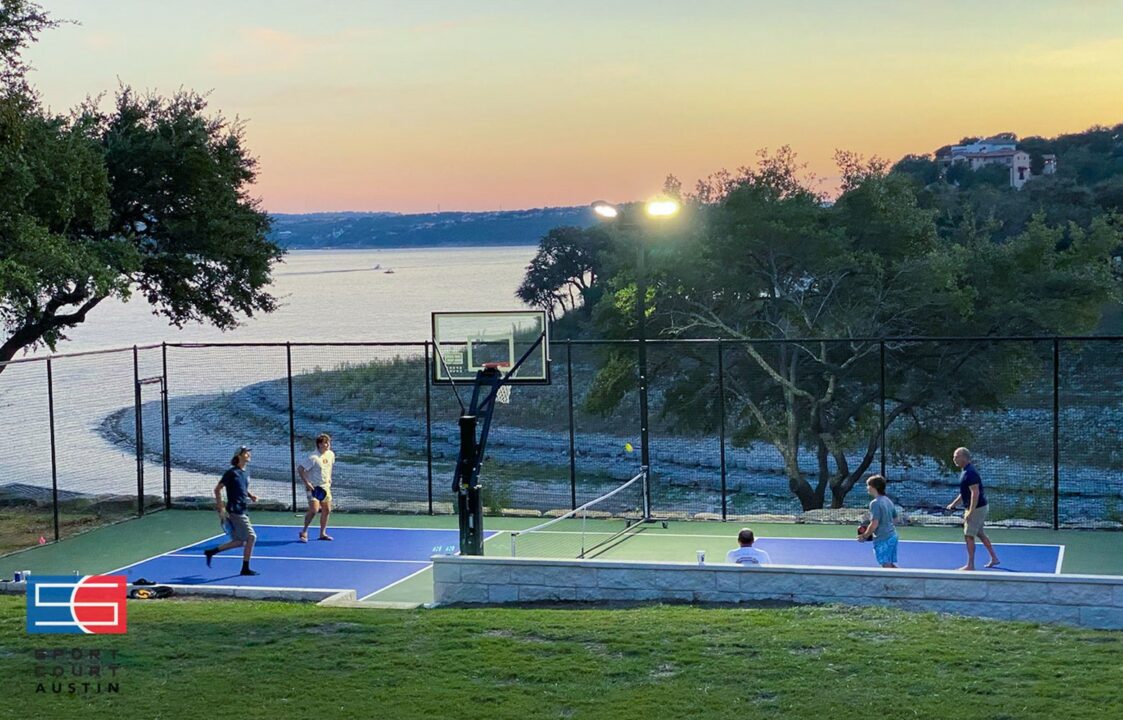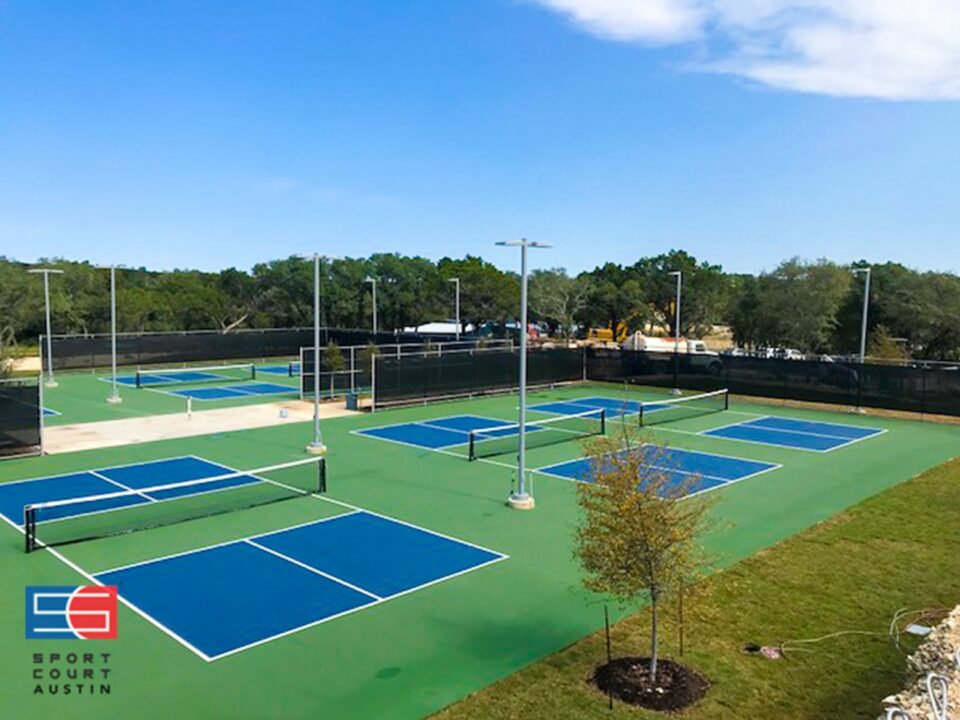As the sound of pickleball paddles reverberates across the nation, an ever-increasing number of enthusiasts are drawn to the sport’s charm. Pickleball, a captivating blend of ping-pong, tennis, and badminton, has rapidly become the fastest-growing sport in the country. With 8.9 million players now volleying and ‘dinking’ on courts nationwide, according to the Sports & Fitness Industry Association, this rapid growth is accompanied by a surprising rise in injuries, prompting crucial questions about the safety and physical demands of this seemingly gentle game.
The Popularity and Physicality of Pickleball
Pickleball’s appeal lies in its simplicity and accessibility, making it an attractive option for both seasoned athletes and those seeking a new way to stay active. Over the past three years, participation in pickleball has surged by an astonishing 159%. What began in 1965 as a backyard pastime, created by Joel Pritchard, has evolved into a national phenomenon.

Despite its approachable nature, pickleball demands agility, quick reflexes, and abrupt movements. Players often dart across the court, lunging for the ball and making rapid directional changes. While these actions add to the excitement, they also place significant strain on the body, especially when played on unforgiving hard surfaces like acrylic courts. As the sport’s popularity soars, so too do concerns about injury, making it imperative to explore how to enjoy the game safely.
Common Injuries in Pickleball
Recent studies, including those by Yasmine Ghattas and Dr. Eric Bowman, alongside data from the Consumer Product Safety Commission, reveal a growing concern over injuries related to pickleball. Common injuries include soft tissue damage, such as sprains and strains, as well as more serious conditions like ACL tears and fractures from falls.

Types of Injuries
Soft Tissue Injuries: Sprains, strains, and ACL tears are prevalent, often resulting from the intense, sudden movements required in pickleball.
Bone Fractures: Falls are a leading cause of fractures, ranging from minor breaks to severe injuries that significantly impact mobility and recovery time.
Rotator Cuff Injuries and Tendinitis: The repetitive motions of pickleball can lead to shoulder and elbow injuries, particularly rotator cuff tears and tendinitis.
Impact on Different Demographics
Women, particularly those over the age of 65, are more susceptible to upper-body fractures, while men are more likely to experience lower-body fractures that require hospitalization.
JT Dettman from Sport Court of Austin notes, “one of the problems is the amount of backpedaling. It is quite easy to lose your balance and fall. Some 55+ communities have gone so far to banning backpedaling from all play at their facilities. They instead require a turn and run backwards technique.” This insight highlights the importance of proper technique in preventing injuries.
The Challenge of Acrylic Courts

The hard, unyielding nature of acrylic courts exacerbates the risk of injury. Unlike softer surfaces, acrylic courts do not absorb impact at all, placing additional strain on joints and bones. This is particularly concerning for older or less-conditioned players, who may be more prone to injury. Compared to other surfaces like grass or synthetic options, the heightened risk associated with acrylic courts becomes evident.
Player Experiences
Many players have shared accounts of significant injuries sustained on acrylic courts. Jane, a 67-year-old pickleball enthusiast, recounted how a simple misstep led to a serious wrist fracture. Medical professionals echo these concerns, noting higher rates of joint and bone issues among those who frequently play on hard surfaces. Dr. Spencer Stein emphasizes the importance of proper preparation and safety measures, advocating for dynamic warm-ups and the use of appropriate footwear to mitigate injury risks.
Preventative Measures and Safety Tips
Ensuring safe play begins with understanding the mechanics of pickleball and practicing proper form. Investing time in learning correct techniques can significantly reduce the risk of injury, ensuring that the sport remains both enjoyable and safe.
Safety Tips
Warm-Up Routines: Engage in dynamic stretches, light jogging, and exercises like jumping jacks to prepare the body for the physical demands of pickleball.
Proper Footwear: Supportive sneakers designed for court sports provide the necessary grip and cushioning.
Safe Falling Techniques: Learning how to fall safely can protect against wrist and head injuries. Practicing safe movement, such as turning and running back toward the baseline instead of backpedaling, is also crucial.
Cross-Training: Building overall strength and endurance through activities like swimming, cycling, and strength training can enhance performance and reduce injury risk.
Health Screenings
Regular health screenings, particularly for bone density, are recommended, especially for middle-aged women. These screenings can help identify potential issues before they lead to serious injuries.
Exercises to Prevent Pickleball Injuries
Professional pickleball player Lee Whitwell recommends a structured warm-up routine to significantly reduce the risk of injuries.
March in Place: Gets the body moving and the blood flowing.
Squats: Warm up the glutes, hip flexors, quadriceps, abs, calves, and hamstrings.
Reverse Lunges: Strengthen the hips, knees, and ankles, preparing them for dynamic movements.
Kickers: Improve hamstring flexibility, crucial for sudden stops and starts.
Trunk Rotations: Increase spine flexibility, helping to prevent lower back strain.
Chest Openers: Stretch the chest, torso, and shoulders to prevent rotator cuff injuries.
Swim Strokes: Warm up the shoulders, reducing the risk of shoulder injuries.
The Benefits of Pickleball
Pickleball offers numerous health benefits, including improved cardiovascular health, better coordination, and valuable social interaction. The sport’s inclusive nature allows people of all ages to engage in friendly competition, enhancing mental acuity and overall well-being.
Are the Benefits Worth the Risks?
With the proper precautions, pickleball can be enjoyed safely by most people. Being informed and prepared, understanding the potential for injury, and taking proactive steps to prevent it can make all the difference in ensuring a safe and enjoyable experience.
Exploring Safer Court Options
To reduce the risk of injury, consider playing on surfaces that are gentler on the body. Options like cushioned courts or synthetic materials provide better shock absorption and reduce the strain on joints and bones.
Benefits of These Alternatives
Switching to safer court surfaces can significantly reduce injury risk. These surfaces are designed to absorb impact, protecting players from the harsh effects of harder surfaces like acrylic.
Product Recommendations
Investing in safer court options can enhance the playing experience and reduce the risk of injuries. For a detailed guide on different pickleball surfaces, visit the Sport Court of Austin blog. Here’s a summary of the main surface types and their pros and cons:
Acrylic Paint

Pros: Cost-effective, consistent texture, customizable pace.
Cons: Hard on joints, requires regular maintenance.
Cushioned Acrylic

Pros: Shock absorption, consistent playability, low daily maintenance.
Cons: Higher installation cost, complex repairs.
Tile/Modular Surfaces

Pros: Cushioned impact, durable, versatile.
Cons: Higher initial cost, potential color fading.
Rolled Surfaces

Pros: Portable, low maintenance, cost-effective for short-term use.
Cons: Not suitable for permanent installations, inconsistent ball response.
Conclusion
As pickleball continues its rapid ascent in popularity, it’s essential to recognize both the benefits and risks associated with the sport. While pickleball offers a fantastic way to stay active, improve cardiovascular health, and enjoy social interactions, it also comes with physical demands that can lead to injuries, particularly when played on unforgiving surfaces like acrylic courts.
By taking preventative measures—like proper warm-ups, wearing the right footwear, and playing on safer surfaces—players can significantly reduce their risk of harm. In essence, the key to enjoying pickleball lies in balancing the sport’s excitement with a mindful approach to safety. By doing so, players of all ages can continue to relish the game while minimizing the risks, ensuring that pickleball remains a fun and inclusive activity for everyone.














